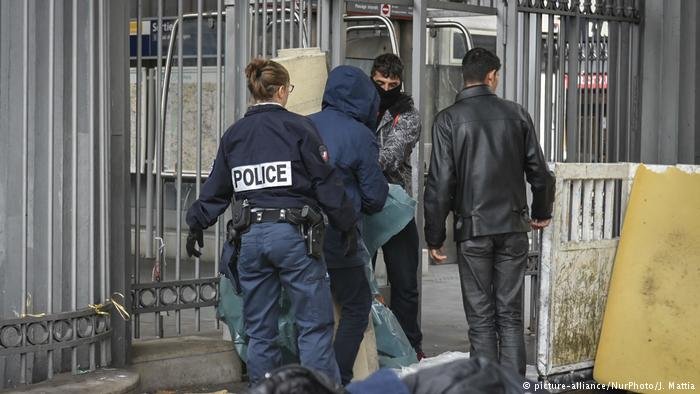As the United Kingdom continues to struggle to stop migrant boat arrivals despite multiple policies in place to disincentivize irregular crossings, recent investigations reveal a number of changing — and often worrying — trends, which have led to a rise in numbers. These include changes in the way that smugglers operate as well as evolving developments in the demographics that seek to reach British soil.
The number of people crossing the English Channel to the UK from France keeps on rising — as do the numbers of fatalities on this dangerous route. With 2025 set to break all previous records, Prime Minister Keir Starmer is facing an uphill battle to even make a dent in irregular crossings.
Policies such as the "one-in, one-out" deal with France affect little change for the time being, with discontent in Starmer's left-wing Labour Party increasingly turning into growing support for far-right parties, in particular Reform UK, led by Nigel Farage.
An analysis of how irregular journeys have changed and evolved in recent years, however, gives a glimpse at where policy changes might need to be applied to result in any lasting change in both the short-term and the long-run.

Read AlsoBritain plans radical changes to immigration law amid far-right pressure
Bigger boats for more migrants
An elaborate investigation by the daily Times newspaper reveals certain changes in the way that smugglers and their syndicates operate in a bid to adapt to new policies on either side of the Channel.
In short, not only has the size of boats employed to cross the channel increased in recent years but so has the number of people that are squeezed onto such unseaworthy vessels.
In August and September this year, two small boats headed to Britain were apprehended with each carrying well over 100 migrants; just a few years earlier, most crossings involved fewer than two dozen migrants during any given attempt.
Even if officials in France get to intervene in more migrant movements along the northern French coast -- especially under expanded power handed to them from Paris earlier this year -- they can barely keep up with the frequency and sheer volume of migrants on the move at any single given time.

Read AlsoUK and France seek novel way to stop small boats amid new records
More migrants per crossing in improvized boat extensions
According to the Times report, even smaller boats designed to transport a maximum of 12 people are retrofitted to host up to 80 individuals now.
In many instances, PVC extensions are added to the middle part of these dinghies, which can shift the center of gravity and result in boats folding in half, trapping people inside.
In certain instances, the boats used in recent years "were so flimsy that some were held together with gaffer tape," the Times revealed, adding that even in these instances, there usually is only about one life vest available on average for up to a dozen people.
Considerable rise in wintertime crossings
Another development recorded in recent years is a rise in winter crossings.
While most irregular journeys across the English Channel continue to take place during the summer months, which bring about more clement weather conditions, the highest frequency of distress calls logged by emergency services was recorded during the winter months.
"In September 2023, 4729 people made the crossing, yet not a single distress call was placed. In December, fewer than 1,000 migrants crossed but 26 boats called for rescue," the Times investigation reveals.

Read AlsoFour die as hundreds of irregular migrants try to reach UK shores over the weekend
Migrants pegged for deportation from EU try their luck in UK
But the Times investigation reveals another trend, which is pushing more migrants from mainland Europe to the UK:
Efforts across the European Union to deport failed asylum seekers and those who have been given protection but were later denied after engaging in criminal activities have resulted in more people trying their luck in Britain.
Since the UK's departure from the European Union, commonly referred to as "Brexit," people arriving in the UK irregularly until recently got to start over with a clean slate; unless they had a severe criminal record following them on Europol and Interpol databases, they could try -- from scratch -- to get protection.
Read AlsoMigrants continue crossing Channel, despite new policies in place
In most instances, they would not be sent back to Europe; even Starmer's recently launched "one-in, one-out" policy, which allows Britain to send certain migrants back to France after crossing the Channel on small boats, can only result in few deportations.
Furthermore, under the terms of the deal, the UK has to take in an equal number of foreigners residing in France with aspirations to claim asylum in the UK on account of having family links there; this ultimately means that in balance, the UK ends up with the same number of asylum seekers in the long-term.

Read AlsoTough on migrants, France clears squatter camp in Calais and stops boat migrants
More families, more children, more infant deaths
There also appear to be more crossings of entire families -- at least in absolute numbers.
Some newer vessels therefore feature two levels — often in a makeshift design — with women and children often placed in the "below deck" part and men journeying above.
These changes directly correlate to more child fatalities during these irregular journeys, with reports of infants being trapped, crushed to death or tumbling into the sea amassing each time a migrant boat suffers a serious and life-threatening case of shipwreck.
Read AlsoPeople smugglers accused of sedating children on Channel crossings
Crises push more people to seek protection
Meanwhile, there have also been shifts in the demographics of people taking irregular journeys; from the civil war in Sudan to the tentative peace and restoration of democracy in Syria, political and military developments in recent years have led to new demographics being added among those hoping to come to the UK.
One of the main developments in this context in the past year was a tenfold increase in Palestinians seeking to reach British shores on small boats, according to a report in the Daily Telegraph newspaper.
Over 300 Palestinians have made their way to the UK by crossing the Channel irregularly so far this year, compared to 38 in all of 2024.
The total number of Palestinians filing asylum claims in the UK, including those who managed to reach Britain by airplane or other regular forms of transport, meanwhile doubled, from 327 cases in the year ending June 2024 to 841 in the following 12 months -- the highest rate ever, exceeding the previous record set in 2005.
Read AlsoPalestinian suspect arrested in UK after crossing Channel
As UK monitors Middle East peace, asylum protections continue
As a fragile ceasefire and associated initiative to rebuild Gaza take effect this week, these numbers could go back -- though much of the infrastructure in the Middle Eastern enclave is destroyed beyond quick repair.
The Daily Telegraph said, however, that if the ceasefire holds and the longterm peace initiative successfully moves into its future stages, Britain might limit the right to asylum for Palestinians.
However, the UK is not the only country eyeing ways to clamp down on immigration on account of geopolitical developments like the ceasefire in Gaza; a recent report by Open Democracy highlights that Jordan, which has a 3-million-strong population of people who identify as Palestinian, is looking to expedite the expulsion of people without work papers.

Read AlsoGazan IDPs have 'nowhere to go' warns Save the Children
In the same region, Lebanon, which has a Palestinian population of about half a million, might also try to push Palestinians out, as it is already trying with Syrian nationals after the fall of the Assad regime last year.
According to experts, a growing rejection of Palestinians across the Middle East could result in cascading migration effects, including displacement both within and outside of the region, growing migration movements to Europe and a resumption of hostilities between the Palestinian Territories -- including Gaza -- and the State of Israel.
The UK, being home to a strong Palestinian diaspora in the capital, London, and a strong Arab community in several parts of the country, is a preferred destination for many Palestinians, especially those who already have family there.
Read AlsoGaza migrants: Embarking on a dangerous journey to Europe
High protection rate for Palestinians in UK — for now
Currently, though relatively low in absolute numbers, Palestinians have some of the highest asylum approval rates in the UK, just shy of 80 percent.
The current Home Office guidance for Palestinians from Gaza states: "The general humanitarian situation in Gaza is so severe that there are substantial grounds for believing that there is a real risk of serious harm because conditions amount to torture or inhuman or degrading treatment.
"Internal relocation is unlikely to be reasonable due to the overall shortfall of the arrival and distribution of humanitarian aid in Gaza, and the unpredictable and fast-moving nature of the conflict."
Much will depend on whether the peace in the Middle East holds, affecting not only Palestinians but populations across the region -- as well as potential host countries like the UK, located thousands of kilometers away.

Read AlsoWill the Hamas attacks trigger a new migration wave to Europe?
